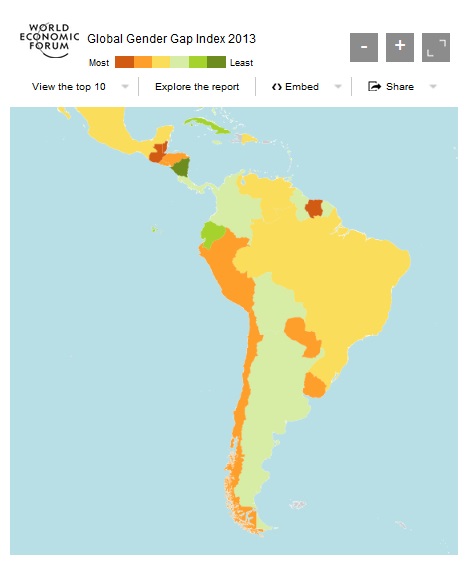Panama Ranks #10 in Latin America and Caribbean, and #37 in the World for Gender Equality
The World Economic Forum recently published it’s Global Gender Gap 2013 report which ranks 136 countries world-wide according to the equality that the genders experience in society. The report focuses on health and survival, education, politics and economic equality as indicators of improving gender equality.
The top 10 Latin American and Caribbean nations in this list included
- Nicaragua, which is the only Latin American or Caribbean country in the top 10 world-wide at #10 out of 136.
- Cuba, which ranks #15 after moving up 4 positions from last year’s report.
- Ecuador, ranking at #25 after a sizable increase of 8 places.
- Bolivia, at #27 on the international list.
- Barbados, which fell 2 positions to # 29 from last year.
- Costa Rica, dropping to #31 globally despite improvements in education.
- Argentina, which despite having a female president was ranked at #34.
- Colombia, having moved up an impressive 28 positions to #35.
- Trinidad and Tabago, which climbed up to #36, mostly due to the decline of ranking in other nations.
- Panama, moved up 3 positions to #37 due to improvements in economic participation and education.
Panama Improving in Education and Economic Participation for Women
Education in Panama has gradually improved over the last decade with women now experiencing a 93% literacy rate compared to a 95% literacy rate in men. While enrollment in primary education is the same for men and women at 97%, enrollment for women is higher than that of men in both secondary and tertiary education although it is still only at 71% and 56% respectively.
Although estimated earned income is only at 55% that of men’s, women in Panama are closing the gap in the fields of legislators, senior officials and managers with a rate of 48% versus men’s rate of 52%, but are ahead of men as professional and technical workers at a rate of 52% compared to that of men at 48%.
These trends can be seen in at work on the streets of Panama as growing numbers of women are now studying for and entering the workplace in positions relating to engineering, architecture and construction management in support of the large amount of commercial and residential development underway in Panama City and other parts of the country. As Panama grows and harnesses its strategic position in Latin America and the Caribbean, women will continue to seize professional and economic opportunities and we hope to see Panama gain additional ranking in gender equality in the coming years both among its regional neighbors as well as on the world stage.


